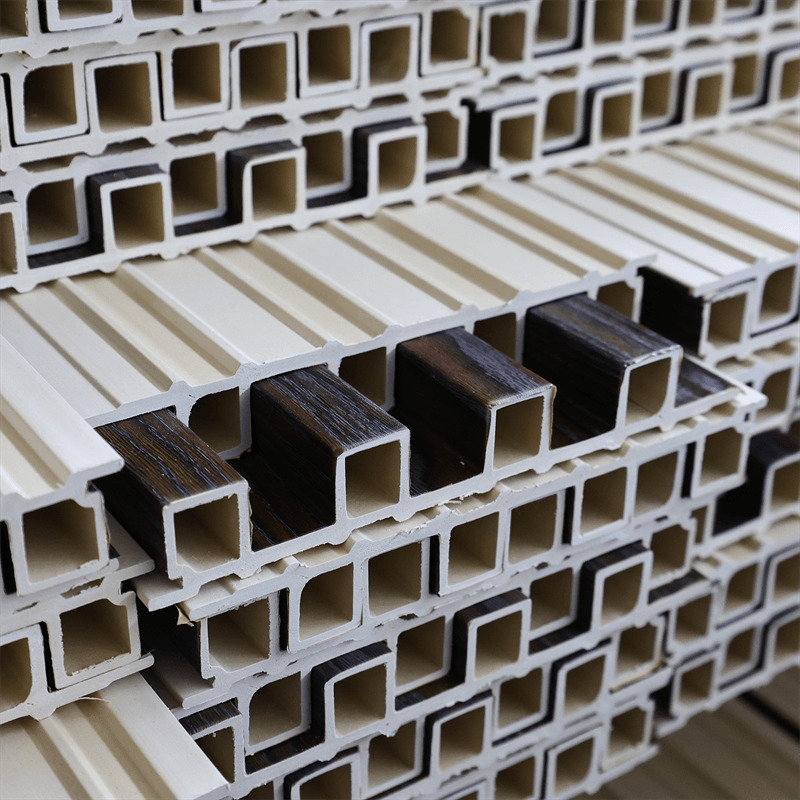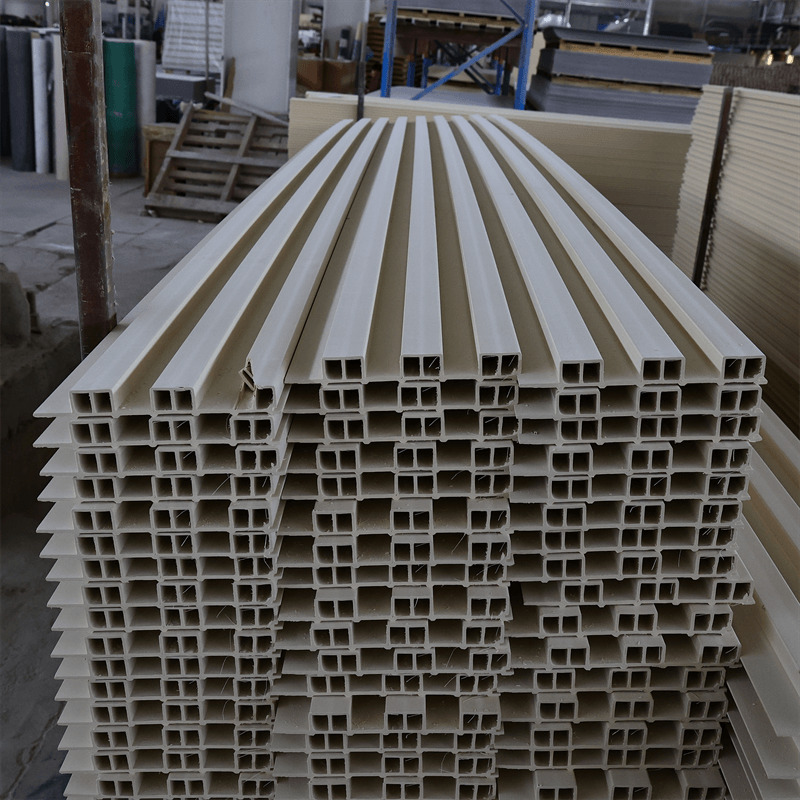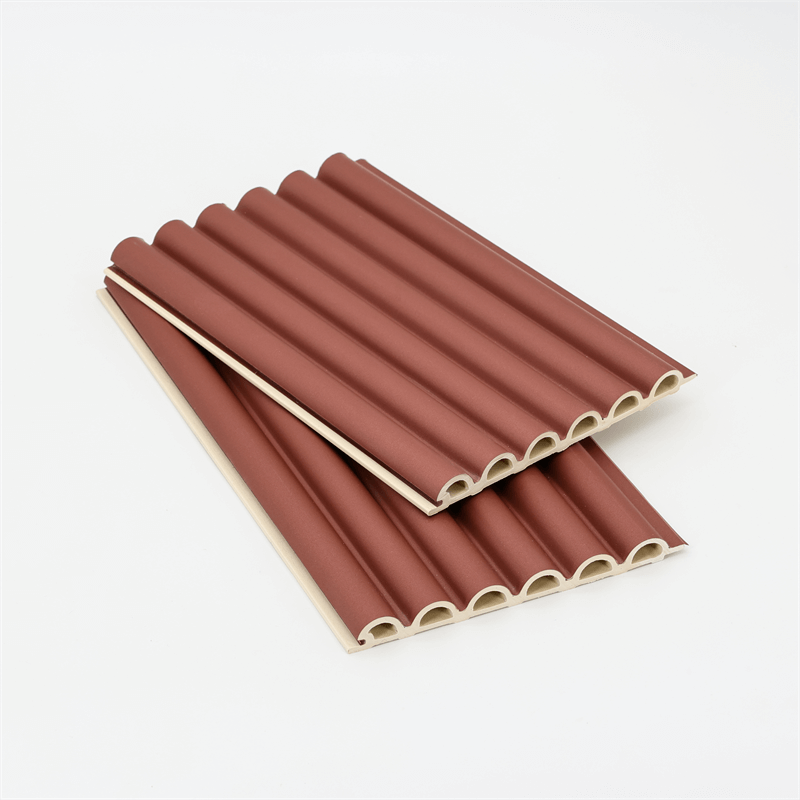In the realm of modern architecture, the versatility of materials plays a crucial role in shaping innovative and visually appealing structures.
Wood-plastic composite (WPC) wall panels have emerged as a versatile and sustainable solution that architects and designers can utilize to create stunning architectural designs.
This essay explores the diverse applications and design possibilities offered by WPC wall panels in modern architecture, focusing on four key aspects: aesthetic versatility, functional adaptability, sustainable construction, and technological integration.
By harnessing the unique properties of WPC panels, architects can push the boundaries of creativity and transform architectural concepts into reality.

I. Aesthetic Versatility:
WPC wall panels offer architects and designers an extensive range of aesthetic possibilities.
The combination of wood fibers and plastic allows for the replication of natural wood textures and finishes, providing warmth and elegance to architectural designs.
The panels can be customized in terms of colors, patterns, and surface treatments, enabling architects to create unique visual expressions that complement the overall design concept.
The aesthetic versatility of WPC panels allows them to blend seamlessly into both traditional and contemporary architectural styles.
In traditional designs, WPC panels can mimic the appearance of timber, offering a sustainable alternative to natural wood while maintaining a classic and timeless aesthetic.
In modern and futuristic designs, WPC panels can be molded and shaped into innovative forms, adding a touch of sophistication and creativity to the architecture.
Whether used as cladding, feature walls, or decorative elements, WPC panels contribute to the overall aesthetic appeal of the building.
II. Functional Adaptability:
Beyond their aesthetic versatility, WPC wall panels also offer functional adaptability, making them suitable for a wide range of architectural applications.
The panels can be easily cut, shaped, and installed to fit various design requirements, providing architects with the flexibility to explore different architectural forms and structures.
WPC panels can be used for interior and exterior applications, such as wall cladding, partitions, ceilings, and furniture, offering a cohesive design language throughout the building.
In interior spaces, WPC panels can serve as acoustical panels, contributing to sound absorption and noise reduction.
Their ability to dampen sound vibrations makes them an excellent choice for spaces such as theaters, auditoriums, and conference rooms.
Additionally, the moisture resistance of WPC panels makes them suitable for areas with high humidity, such as bathrooms and swimming pool enclosures.
In exterior applications, WPC panels provide durability and weather resistance. They can withstand exposure to sunlight, rain, and temperature variations without warping, cracking, or fading.
This makes them ideal for façades, outdoor seating areas, and decorative elements that require long-term performance and minimal maintenance.
III. Sustainable Construction:
Sustainable construction practices have become increasingly important in modern architecture, with a focus on reducing environmental impact and promoting energy efficiency.
WPC wall panels align with these principles by offering a sustainable alternative to traditional construction materials.
The production of WPC panels involves the use of recycled wood fibers and plastic, diverting waste from landfills and reducing the demand for virgin materials.
By utilizing recycled materials, WPC panels contribute to the conservation of natural resources and reduce deforestation.
Additionally, the manufacturing process of WPC panels consumes less energy and emits fewer greenhouse gases compared to the production of traditional building materials, further reducing the carbon footprint.
The durability of WPC panels also contributes to sustainable construction. Their resistance to rot, decay, and moisture eliminates the need for frequent replacements, reducing waste generation.
Furthermore, WPC panels require minimal maintenance, eliminating the use of harsh chemicals typically associated with the upkeep of natural wood materials.
IV. Technological Integration:
As technology continues to advance, architects are seeking ways to integrate innovative technologies into architectural designs.
WPC wall panels provide a platform for incorporating technological features seamlessly into the building envelope.
One example is the integration of lighting systems within the WPC panels. By embedding LED lights or light strips into the panels, architects can create dynamic lighting effects and enhance the visual impact of the building. This integration of lighting not only adds aesthetic value but also improves functionality and energy efficiency.
Another technological integration possibility is the inclusion of smart building features.
WPC panels can accommodate sensors, cameras, and other IoT (Internet of Things) devices, allowing for the creation of intelligent and responsive architectural designs.
This integration enables the building to monitor and control various aspects, such as lighting, temperature, and security, enhancing the occupant experience and optimizing energy usage.
The versatility of WPC wall panels in modern architecture offers architects and designers a wide range of possibilities to create visually striking and sustainable structures.
From their aesthetic versatility and functional adaptability to their contribution to sustainable construction practices and technological integration, WPC panels have become a favored choice for architects looking to push the boundaries of creativity and embrace eco-conscious design.
By harnessing the unique properties of WPC panels, architects can transform architectural concepts into reality, creating buildings that are not only visually appealing but also durable, energy-efficient, and environmentally friendly.
The versatility of WPC panels opens up endless possibilities for architectural expression, enabling the realization of innovative and sustainable designs that meet the evolving needs of the modern world.
Moreover, the versatility of WPC wall panels extends beyond their physical attributes. They also offer architects and designers the opportunity to explore different design concepts and architectural styles.
The ability to customize the color, texture, and pattern of WPC panels allows for creative expression and the creation of unique spaces.
Architects can play with various combinations of WPC panels to create visually captivating designs.
They can incorporate different panel sizes and shapes, create contrasting patterns, or even combine WPC panels with other materials to achieve a harmonious blend of textures.
This flexibility enables architects to design buildings that stand out and make a bold architectural statement.
Additionally, the lightweight nature of WPC wall panels makes them suitable for both new construction projects and renovation projects.
They can be easily installed, reducing construction time and costs.

WPC panels can be used as cladding over existing walls, transforming the appearance of a building and giving it a fresh and modern look without the need for extensive demolition or reconstruction.
The versatility of WPC wall panels is also evident in their compatibility with various architectural styles.
Whether it is a sleek and contemporary design, a rustic and natural aesthetic, or a minimalist and industrial approach, WPC panels can be adapted to suit the desired style.
They can be used to create clean and smooth surfaces or add texture and depth to the façade. This adaptability allows architects to achieve their desired architectural vision while incorporating the benefits of WPC panels.
Furthermore, the versatility of WPC wall panels extends to their application in different building types.
They can be utilized in residential, commercial, and public buildings, offering a consistent design language throughout a project.
From single-family homes to office buildings, retail spaces to educational institutions, WPC panels can enhance the visual appeal and functionality of any structure.
In residential applications, WPC panels can be used for interior wall cladding, creating a warm and inviting atmosphere.
They can also be employed as exterior cladding, adding curb appeal to residential buildings while providing the necessary durability and weather resistance.
Additionally, WPC panels can be used in the construction of fences, gates, and privacy screens, offering both aesthetic appeal and functionality.
In commercial spaces, WPC panels offer a versatile and cost-effective solution for creating visually appealing interiors.
From office lobbies to retail stores, WPC panels can be used to design feature walls, ceiling treatments, and partition systems.
The ability to customize the panels allows for branding opportunities and the creation of unique customer experiences.
In public buildings, such as schools, hospitals, and community centers, the versatility of WPC wall panels can be utilized to create functional and aesthetically pleasing environments.
They can be used for wall protection, acoustical treatments, and decorative elements, contributing to a comfortable and visually stimulating space for users.
In conclusion, the versatility of WPC wall panels in modern architecture offers architects and designers endless possibilities for creativity and expression.
The ability to customize their appearance, their adaptability to different styles and building types, and their ease of installation make them a popular choice in the construction industry.
Whether used for interior or exterior applications, WPC panels can transform ordinary spaces into extraordinary ones, enhancing the visual appeal, functionality, and sustainability of architectural designs.
With their wide range of applications and design possibilities, WPC wall panels continue to push the boundaries of innovation and shape the future of modern architecture.

